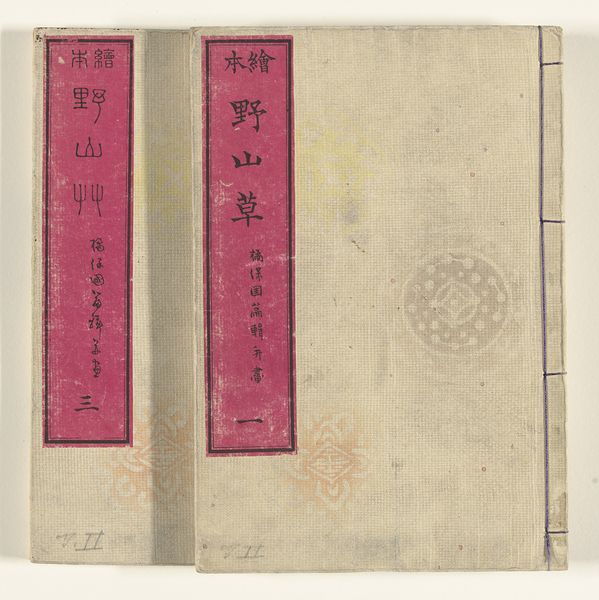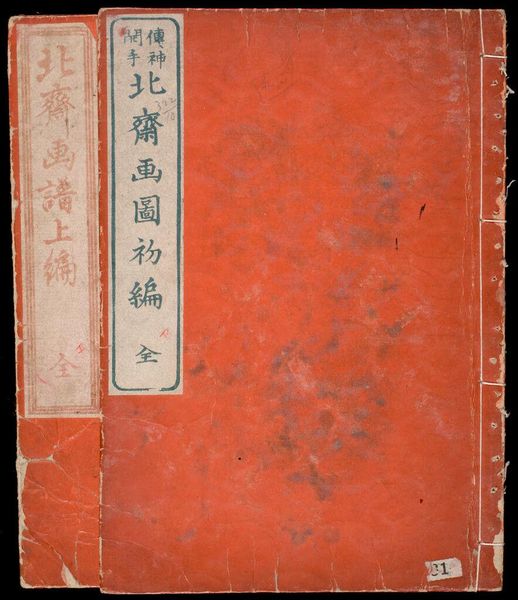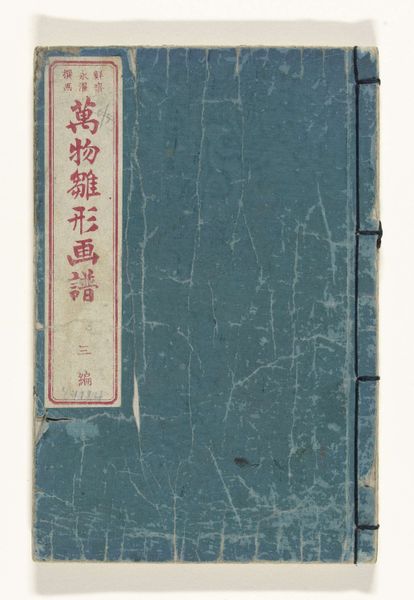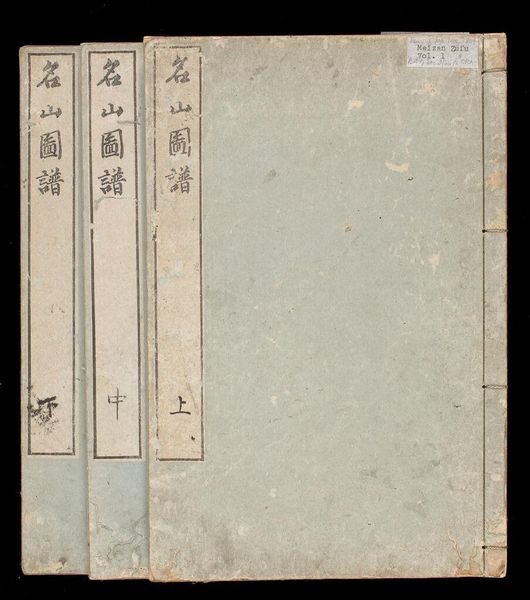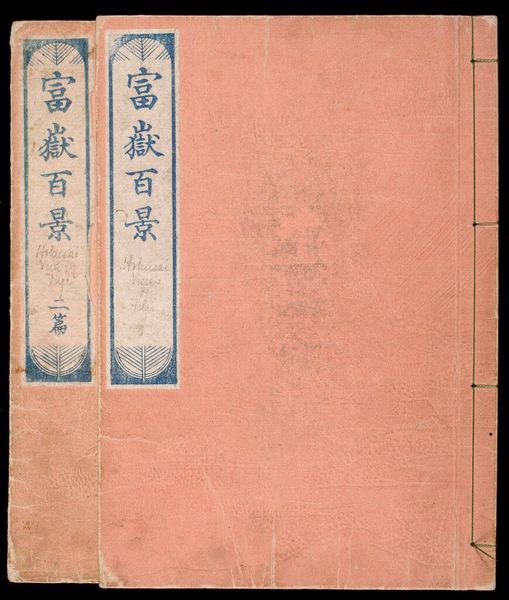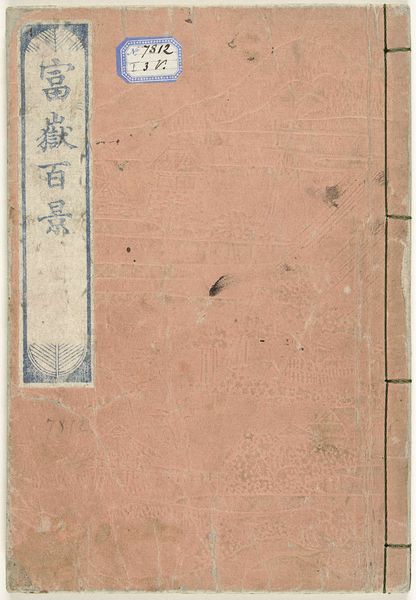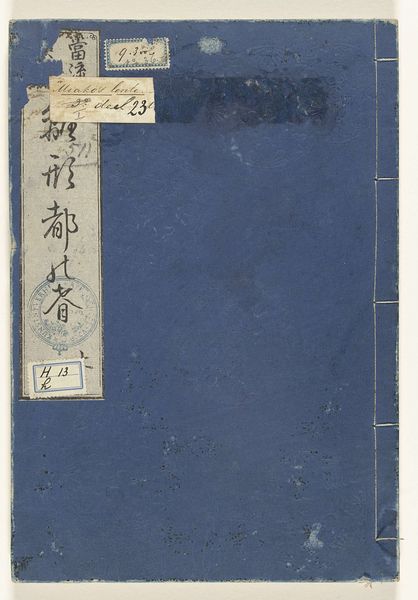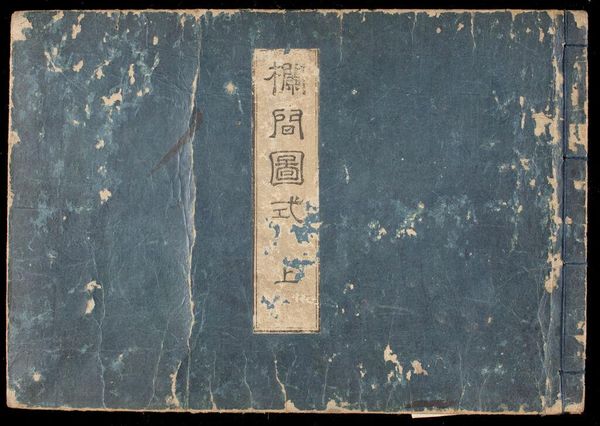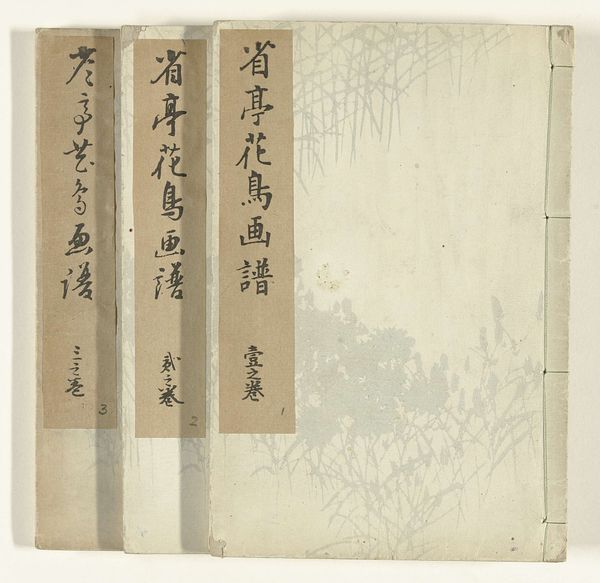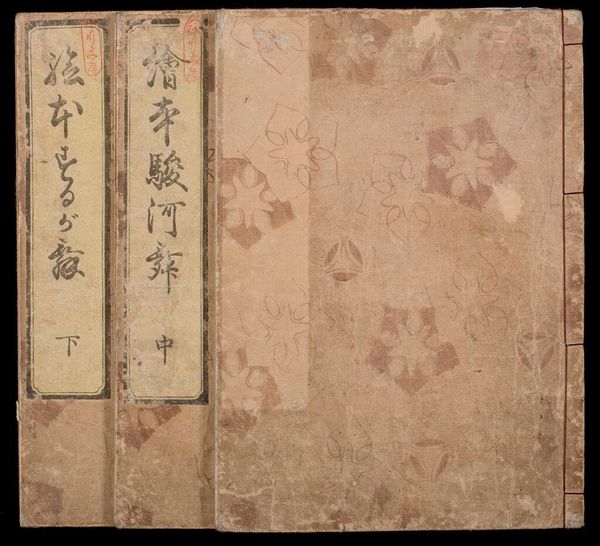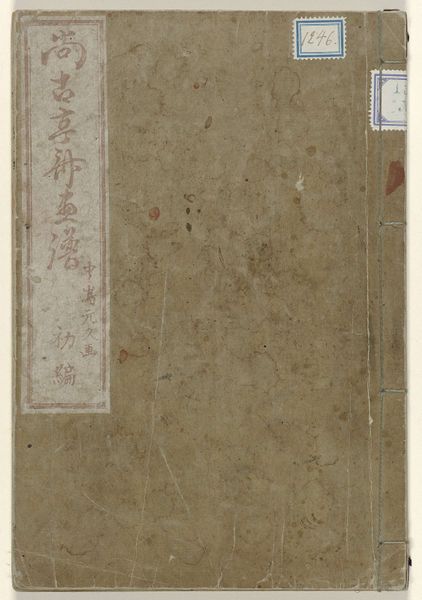
print, paper, woodblock-print
# print
#
asian-art
#
landscape
#
ukiyo-e
#
paper
#
woodblock-print
#
orientalism
Dimensions: height 225 mm, width 155 mm
Copyright: Rijks Museum: Open Domain
Curator: Looking at these three bookbindings depicting Katsushika Hokusai’s “Honderd gezichten op de berg Fuji”—One Hundred Views of Mount Fuji—likely created between 1834 and 1876 and held here at the Rijksmuseum, I am struck by the sheer economy of form. Editor: Indeed. The composition leans into simplicity. The covers are, save for the elegant spine title design, deceptively plain, in washed-out shades of pink and salmon, highlighting the aged paper. It feels as if the intent is for viewers to project their own visions onto it before they even engage with what’s inside. Curator: Considering this work, within the social milieu of 19th-century Japan and burgeoning interest in ukiyo-e and the rise of landscape prints—orientalism, as well—do you not agree there’s more to unpack? Editor: Yes, and let’s unpack those views from a structural point of view, examining each design element as a signifier: the crisp rectilinear designs containing calligraphic titles act as framing devices not only for the text but potentially for the myriad artistic depictions of the sacred mountain housed inside each volume. Curator: It’s difficult to ignore that Hokusai made these works rather late in his career; it is possible to interpret it as a study of identity, of looking back, with Mt. Fuji symbolizing a steadfastness against the changes that impacted Japan’s people in the artist’s lifetime. He captures both the timeless beauty and the social impact of modernization, the spiritual with the political. Editor: I follow you, and to take your points further—consider also that, visually, the uniformity and subtle color variance in the books evoke a sense of rhythm and repetition… almost as if, even without seeing what is within, Hokusai seeks to replicate, via this simple presentation of binding, his central theme of endless ways of perceiving nature itself. Curator: I concur—to gaze upon these covers is to invoke our role and gaze as both consumer and recorder of the human footprint, its impact on landscape, culture, and identity. Editor: A poignant reminder that simplicity, structurally sound, invites us into complexity.
Comments
No comments
Be the first to comment and join the conversation on the ultimate creative platform.
